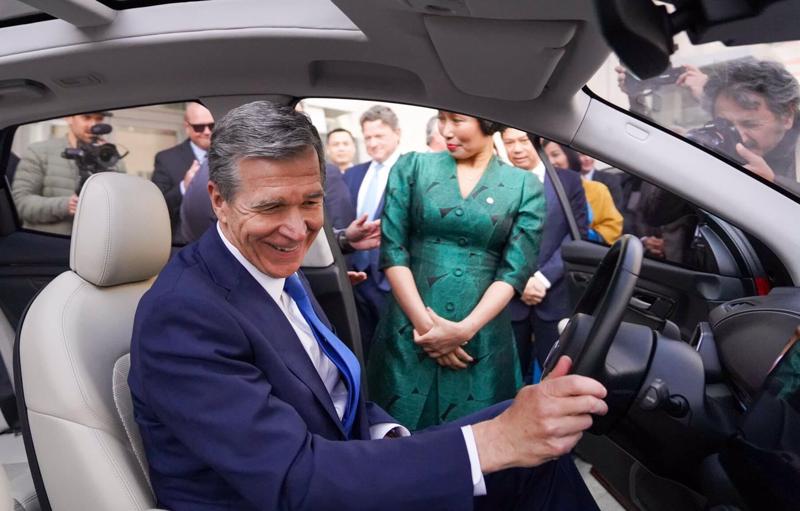(The Center Square) – Green agenda proclamations rolled forth in North Carolina on Thursday with another visit by the vice president.
Among the projects that can be assisted in the $20 billion grant awards through the Environmental Protection Agency are electric vehicle charging stations. Evidence of North Carolinians agreeing with the government’s shove, however, remains circumspect.
More contextualized by taxpayers is the national response by the public, automakers in response to buyers, and respondents to polling from The Center Square.
Included in Vice President Kamala Harris’ announcement on Thursday afternoon at a recreation center in southeast Charlotte were $14 billion of the awards through the National Clean Investment Fund and another $6 billion through the Clean Communities Investment Accelerator program.
The EPA’s $27 billion Greenhouse Gas Reduction Fund, umbrella to both programs, is funded by the $891 billion Inflation Reduction Act of 2022.
Taking center stage with Harris was Gov. Roy Cooper, who in 2018 set a goal of 80,000 zero-emission vehicles registered before 2025. In 2022, he upped it to 1.25 million by 2030. While the first was set with about 10,000 registered and has been achieved early, the second has 1.17 million to go and needs a monthly pace of 14,400 – higher than the annual average (13,000) since November 2018.
Five thousand car dealers signed the second of two letters asking President Joe Biden to “slam the brakes” on the push of his ideas for the industry. They have inventory and it’s not quick to move, for reasons such as affordability and range anxiety.
Additionally, their overlords in the industry see the public response. Ford Motor Co. indefinitely postponed a $12 billion investment in electric vehicles and paused a $3.5 billion plant in Michigan. Respective programs by General Motors and Honda to sell electric vehicles at about $30,000 each have been canceled.
All were handsomely courted with taxpayer subsidies.
In the March analysis from The Center Square Voters’ Voice Poll, 52% of 2,510 likely voters (32% strongly, 20% somewhat) were against the government spending more on electric vehicles. Only 15% strongly thought it should, and 24% somewhat did. Rural (63%-31%) and suburban likely voters (53%-39%) were decidedly against more spending; urban likely voters (49%-41%) favored it.
Of four geographic regions, the South (55%-36%) was most against more government spending though certainly not alone as compared to the West (51%-42%), Midwest (50%-41%) and Northeast (49%-42%).
In a poll last summer from High Point University, 13 issues considered important for the next governor were ahead of transportation infrastructure. Climate change was 15th.
Cooper, term-limited and leaving office after this calendar year, has sought and welcomed multiple components for the electric vehicle industry to the nation’s ninth-largest state. Its 10.8 million population, however, has about 8 million vehicle registrations for combustion engines.
Toyota is investing $13.9 billion in a Randolph County plant 20 miles from downtown Greensboro. State incentives are up to $315 million over 39 years, and $185 million in site development funds.
Epsilon ($650 million investment in a synthetic graphite production plant) and Kempower ($41 million investment) are among other companies in the industry with project announcements that came in 2023.
All trail in buzz to the spring 2022 announcement of Vietnamese electric vehicle manufacturer VinFast’s first phase $2 billion investment in a Chatham County plant. Based on a $4 billion investment, the company would get taxpayer subsidies of $316.1 million over 32 years.
VinFast’s losses eclipse $5 billion since 2021 and reviews for its first product designed for the U.S., the VF8 City Edition, were atrocious. It’s a $50,000-plus electric vehicle.







